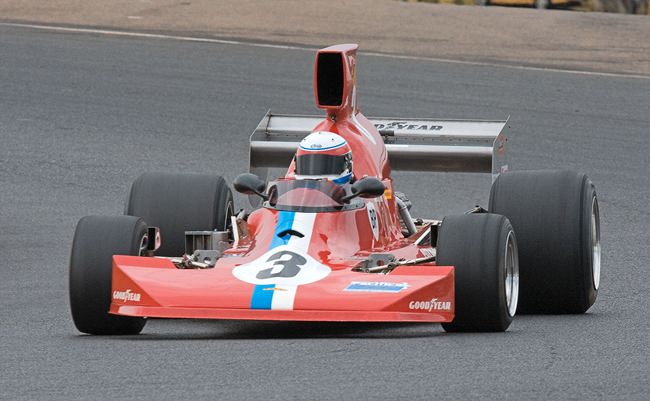
Most motoring enthusiasts have driven a ‘performance’ car at some stage. Remember, however, that everything is relative, and in 1950 an MG TC sports was exciting with wind in the hair, and in 1964 an E-Type Jaguar had exhilarating acceleration leading us to joke that you needed additional oxygen to drive one. It also took seven seconds to get to 100 kph from rest.
Then came the Lamborghini Diablo and posters on every workshop wall, and it ran out of breath about 250 km/h. Near F1 times? Not yet!
I have driven all those performance cars, and I have driven F1 cars of the day. These were also known as Formula 5000, hulking great open wheel race cars with a five liter Chevrolet V8 stuffed in the rear with 500 horsepower, and the one I drove was a Lola T430, a special built for Count Van Der Straten (VDS) team.
I was invited to drive the Lola by its owner Bob Minogue, at the Calder race circuit outside Melbourne Australia.
The drive starts with trying to fit into a single seater cockpit. There are no tubby single seater drivers (monoposto)! Next is to find where the controls and instruments are placed. That was when I found out that when turning, my hand obscured the rev counter, a very important piece of equipment. Knowing what revs and what gear is very necessary, these cars do not have a speedometer and you are sitting in the midst of noise, thumps, bangs and mechanical clatter just behind your head from the engine.
Minogue described the drive as trying to throw a sledgehammer handle first, while sitting in a bath tub of petrol.
Sitting in an F1 car (of the day) the front wheels are very much in your line of vision, but as soon as you are moving, they become less intrusive. You are looking at where the front wheel needs to be placed relative to the apex. This is altered by the throttle opening, with the power available you can literally lift the front wheels towards the outside of the corner, giving classic understeer. To counteract this you brake as late as possible, as the weight transfer loads the front tyres, making them grip better and producing classic oversteer in the rear. You are looking for a balance at 160 km/h. F1 drivers can get very busy at times.
For acceleration, the F1 car just gives you a relentless push in the back, all the way to peak revs, where you pull firmly on the gear lever to select the next higher gear up until the gearbox has no more and you are looking at 300 km/h. Even today’s F1 cars peak at around 320 km/h.
 |
 |





